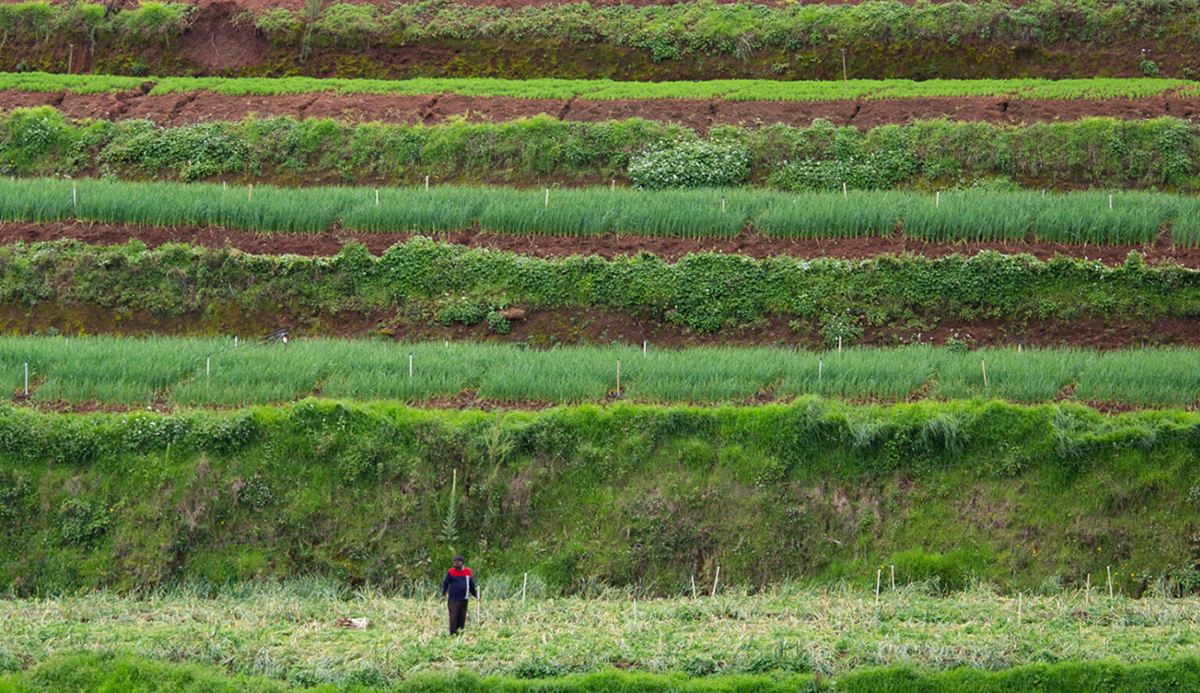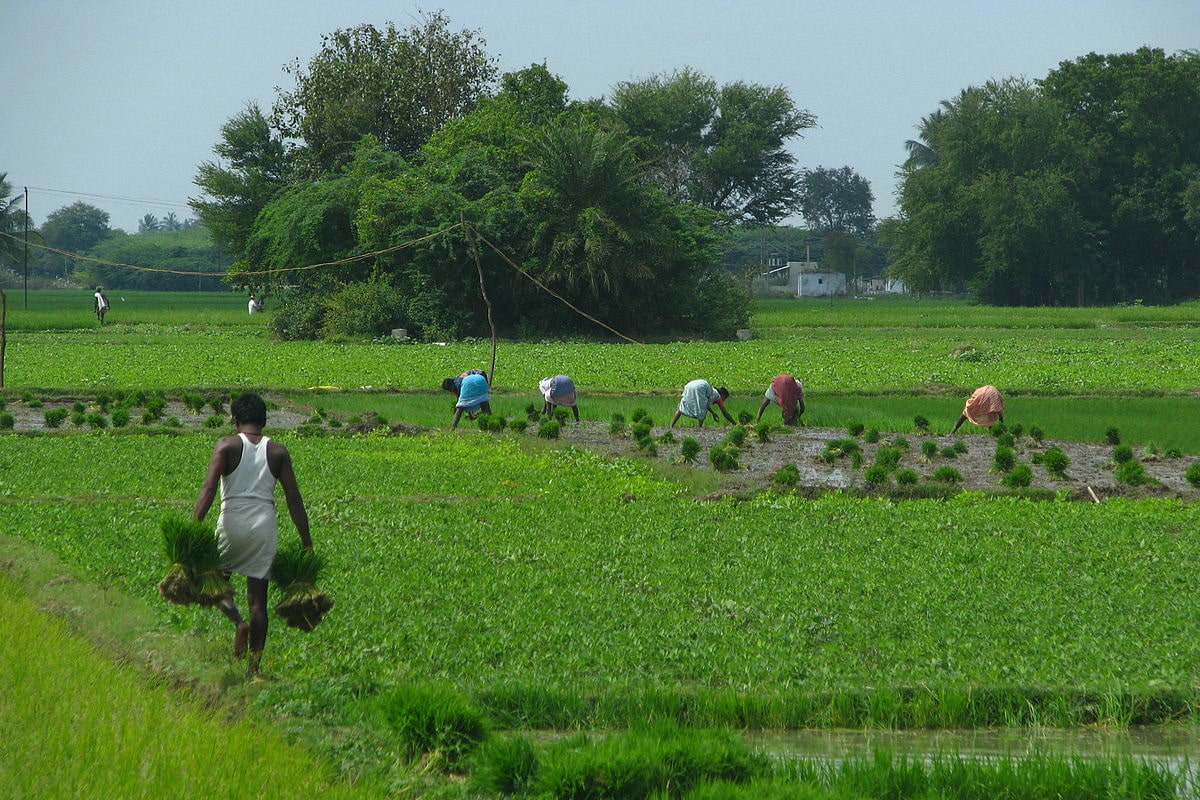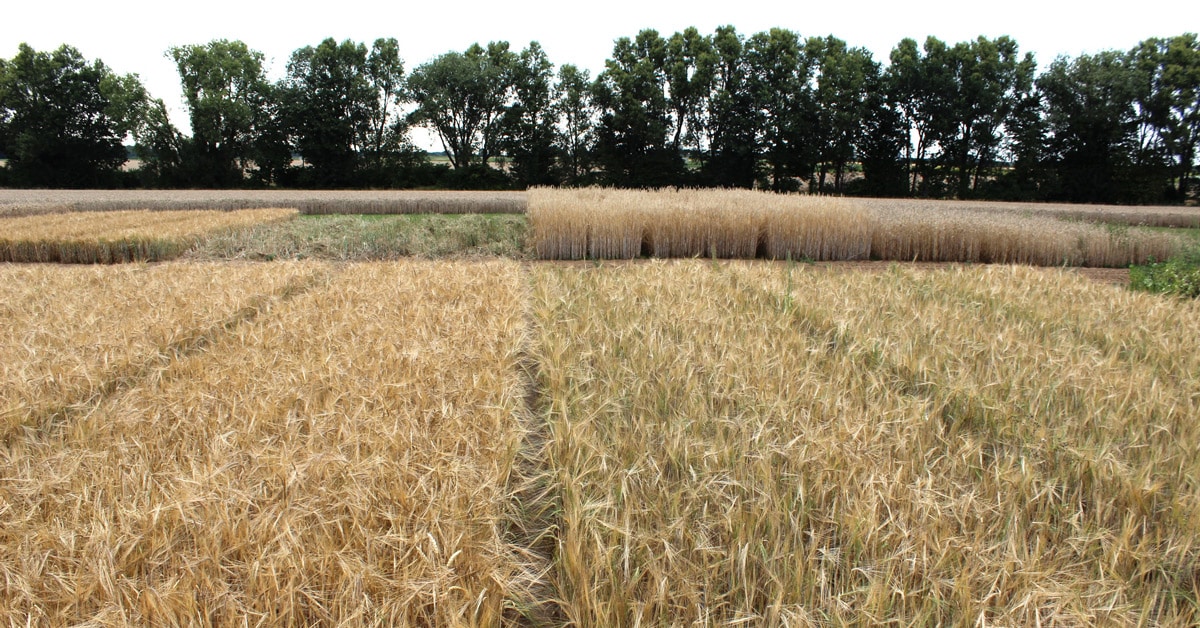

Can organic farmers’ markets encourage chemical-free farming?
by | Oct 15, 2024
- Organic farmers’ markets in the Nilgiris district offer a platform for selling chemical-free produce directly to consumers.
- Chemical-intensive farming, however, continues unabated in the region, despite efforts to transition to organic practices.
- Experts attribute this persistent reliance on chemicals to a historic dependence shaped by various social, economic, and cultural factors.
The Horticulture Centre, located across from the renowned Sim’s Park in Coonoor, was set to welcome organic farmers from the Nilgiris district in Tamil Nadu on June 29, 2024. The centre aimed to provide a platform for farmers to sell their chemical-free produce directly to customers. Organised by the Tamil Nadu Department of Horticulture in collaboration with The Nilgiris Organic Horticulture Farmers’ Association (TOHFA), the Coonoor farmers’ market is second such attempt in the district, after the success of a similar one in Ooty (officially, Udhagamandalam), another town in the Nilgiris district.
“The Ooty market attracts a lot of tourists, but we expect a more consistent, resident crowd here,” Nimmi John of non-profit The Earth Trust and one of the organisers of the market, told Mongabay India, a day before the launch.

A buzzing organic farmers’ market in Coonoor. Such markets are being organised in the Nilgiris to encourage chemical-free farming and to create a market for organic farmers. Image by Abhishek N. Chinnappa/Mongabay.
At 10 a.m. the following day, the centre welcomed a handful of farmers from across the district and a steady stream of customers eager to purchase fresh, chemical-free produce. The diversity of offerings was impressive: wild greens, local seasonal fruits and vegetables, pickles, dried nuts, and spices, alongside familiar staples.
Athishta Kumar, a pear farmer, sold hundreds of pears within the first couple of hours of the market opening. “I have 40 pear trees on one acre of land, which give me a good yield,” Kumar shared, visibly pleased. “Switching to chemical-free farming has actually improved my farm yields,” he added, challenging the common belief that organic farming is less productive.
Efforts at going organic
The hilly district, known for its temperate weather, biodiversity, and agricultural abundance, initiated the transition to organic farming in 2019 under the leadership of the then district collector J. Innocent Divya, who envisioned a chemical-free district inspired by Sikkim, India’s first and only organic state. The government even launched an app to assist farmers to switch to organic. The momentum, however, waned soon. “Of the 80,000-odd horticultural farmers in the district (according to the 2011 census), only about 60-70 are registered with TOHFA as organic farmers, and 1,000 are in the process of transitioning,” reveals Thanvish V., a Nilgiris-based specialist in sustainable farm management and an organiser of the weekly farmers market.

A variety of farm produce gets showcased at organic farmers’ markets in the Nilgiris in a bid to bring back local and season vegetables and fruits that are going out of popularity. Image by Abhishek N. Chinnappa/Mongabay.
TOHFA has still not made inroads into many indigenous farming communities who are organic farmers by default. The Nilgiris district is home to all six tribal groups, listed as Particularly Vulnerable Tribal Groups (PVTGs), found in Tamil Nadu. Thanvish mentions that efforts are underway to establish a market for these tribal communities, allowing them to benefit from TOHFA’s initiative to promote chemical-free farm produce.
The COVID-19 pandemic also played a significant role in this context. Thanvish highlights that farmers fear financial instability if they switch to new farming methods. Hence, the adoption of chemical-free farming has been painfully slow in the region. Organic farmers’ markets aim to encourage more producers to adopt sustainable practices and promote healthy eating among households.
For conscious farmers like Thanvish, the concern lies not in the mere use of chemicals but in their indiscriminate application. He notes that 15 percent of chemical inputs used in farming in Tamil Nadu make their way to the Nilgiris. While Mongabay India could not verify this claim, if accurate, it represents a substantial amount, especially considering that the net sown area in Tamil Nadu is approximately 4.7 million hectares, with the Nilgiris contributing only about 79,000 hectares.
Chemical intensive farming
Kulisholai village, located in the Doddabetta panchayat in Ooty, features acres dedicated to crops such as potatoes, carrots, beetroots, and garlic — often referred to as “English vegetables” — for which Ooty is well-known. This area, where small parcels of land are cultivated year-round, represents the chemical-intensive farming practices prevalent in the district. The vegetables from here are transported to large marketplaces or mandis in Mettupalayam in Tamil Nadu and Bengaluru in Karnataka from where they go to smaller retailers across South India.

Despite the district’s intention and efforts to go fully organic, indiscriminate amount of chemicals get used in the farms. Image by Abhishek N. Chinnappa/Mongabay.
Farmer Doraiswamy of Kulisholai was spraying pesticides on his garlic crops without protective gear, such as a face mask or gloves, when Mongabay India visited the village. He applies herbicides, pesticides, and fertilisers provided by the horticulture department every month, he explains. “There is a formula I follow, and I spray these every month,” Doraiswamy says, though he is unaware of the specific chemical brands or suppliers.
In an adjacent plot, Murthy has his labour from Chhattisgarh spreading urea and potassium powder at the roots of his carrot crop. Additionally, he puts diammonium phosphate or DAP fertiliser twice every four months. The effect of urea as a nitrogen fertiliser on soil pH and nutrients is well documented. Studies have shown long-term use of urea can result in acidification of soil and reduce its quality.

Climate change invites diverse pests to farms encouraging farmers to use more and stronger pesticides to eliminate them. Image by Abhishek N. Chinnappa/Mongabay.
At the peak of the organic movement in the Nilgiris, Murthy too tried transitioning. “Organic farming is not often successful in this weather,” he says, adding that change in weather patterns has made farming a gamble. Climate change invites pests which further pushes farmers to rely on pesticides. “Last few months (March to May) were unexpectedly dry,” Murthy says, and his crops wilted in the harsh summer sun. “June looks promising,” he adds.
While January saw near zero temperatures in Ooty, April recorded the highest ever temperature at 29 degree Celsius. Climate change impact studies have shown that temperature has an effect on insect population dynamics. Global warming may trigger an expansion of their geographic range, enhance overwintering survival, increase the number of generations, and elevate the risk of invasive insect species and insect-transmitted plant diseases. Additionally, climate change could alter interactions between insects, host plants, and their natural enemies.
Hark back to history
The Nilgiris’ tryst with intensive chemical farming dates back to the 1960s, during the peak of the Cold War. Siddhartha Krishnan, an environmental sociologist with the Ashoka Trust for Research in Ecology and the Environment (ATREE), traces its origins to the Indo-German Nilgiris Development Program (IGNDP), a West German initiative aimed at “modernising” potato farming introduced by the British. In a chapter of the book Transplanting Modernity: New Histories of Poverty, Development, and Environment, Krishnan notes that the dependency of farmers in the Nilgiris is an enduring legacy of West Germany’s financial and technical support aimed at increasing crop yield and cultivating the “foreign crop”. This dependency persists, as these chemicals are heavily subsidised and often provided on credit by agents, as Thanvish points out.

Organic farmer Athistha Kumar (left) says switching to organic farming has improved yields on his farm, countering the notion that chemical-free farming is not productive. Image by Abhishek N. Chinnappa/Mongabay.
Some pesticides can bioaccumulate and persist in the environment for extended periods. Krishnan highlights that organochlorines, a specific family of pesticides, are particularly concerning due to their slow decomposition and tendency to accumulate in animal tissues. Herbicides can iinhibit seedling growth, photosynthesis, and the biosynthesis of amino acids and lipids, while insecticides primarily affect nerve and muscle function, growth and development, and energy production. “The impacts of chemical inputs — including pesticides, herbicides, and weedicides — are magnified through water, soil, and air,” Krishnan writes.
A significant portion of water supply for seven districts in Tamil Nadu originates in the Nilgiris. This district is part of the Cauvery basin, where numerous streams flow from the hill slopes, forming several rivers in the deep valleys. The reservoirs in the area capture this water for drinking, agriculture, and power generation. Any surplus is directed to other regions of the state, including Coimbatore and Puducherry.
Rising water quality concerns
A 2019 study report on the water quality of three wetlands in the district, conducted by the non-profit Keystone Foundation, reveals concerning findings. Several persistent organic pollutants (POPs) identified by the Stockholm Convention, including β-HCH, DDE, DDT, and lindane, were detected in these wetlands.

Environmental sociologist Siddhartha Krishnan attributes the Nilgiris farmers’ dependence on chemicals to social, economic and cultural factors. Image by Abhishek N. Chinnappa/Mongabay.
Sediment samples collected from various study sites — such as stream areas, downstream locations, agricultural fields, and ponds — showed that β-HCH and lindane exceeded sediment quality guidelines (SQG), threshold effect levels (TEL), probable effect levels (PEL), and maximum permissible concentrations (MPC). This indicates a potential risk of adverse effects on local organisms. DDE and DDT were also found in some samples.
These chemicals have far-reaching impacts on both human health and wildlife. For example, lindane, an organochlorine pesticide, is a known carcinogen associated with endocrine disorders, while DDE and DDT can disrupt metabolic functions in organisms, leading to liver cancer and reproductive abnormalities, among other health issues.

A study of the water quality of the wetlands in the Nilgiris shows traces of persistent organic pollutants or POPs in the water that are detrimental to human health and wildlife. Image by Abhishek N. Chinnappa/Mongabay.
The report highlights that, in addition to accumulation in animal tissues through food chains, the high rainfall and laterite soil in the district accelerate the leaching of toxic chemicals. This process leads to the contamination of water bodies not only in the hills but also in the plains. Contaminated sediments can be directly toxic to aquatic life and may also serve as a source of contaminants that contribute to bioaccumulation in the food chain.
Krishnan explains that various social, economic, and cultural factors influence a farmer’s choice of agricultural methods. “Most farmers in the Nilgiris are second- or third-generation farmers who regularly interact with other sector players, including fertiliser dealers, and have developed relationships with them,” he explains. For many, particularly small landholders, transitioning to organic farming poses significant challenges, as they lack the economic buffer to endure a few years of lower yields during the process. “Farmers often feel responsible not only for their own livelihoods but also for those of their workers,” Krishnan says, adding: “Unless the government allocates a huge budget to support this transition, chemical farming will continue in the Nilgiris.”
Subscribe to Mongabay







0 Comments